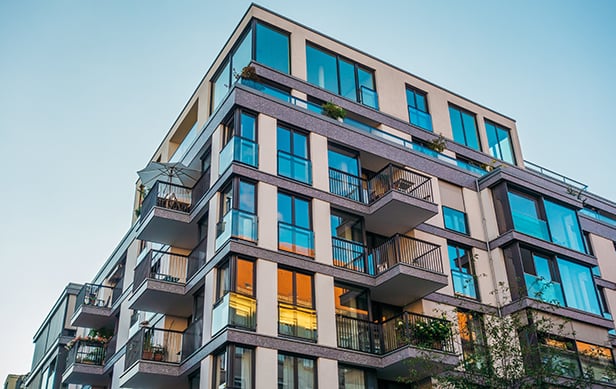GlobeSt.com: Most Manhattan firms branch out within the Northeast when they decide to go. DC and LA? Explain.
Hackett: When we decided we wanted diversification outside of New York, we needed a city we were interested in for the long term and a project of a certain size and scope. In Los Angeles, the project is Blvd6200, which is located on Hollywood Boulevard. The owners--the Nederlander family--are from New York, and we've known them for a long time and worked with them here. In fact, our history together goes back to the original development of Times Square. I was an executive of the originally designated developer of Times Square [Clarett co-founder Neil C. Klarfeld and Hackett were EVPs at Park Tower Realty].
GlobeSt.com: Tell us about the project.
Hackett: It's exciting. Blvd6200 is a million-sf project. The basic structure of the deal is a 99-year ground lease for seven acres, and the project calls for 1,000 units of housing, 175,000 feet of retail--40,000 sf of live/work units. It's entertainment-oriented and next door to the Pantages Theatre, which is also owned by the Nederlanders. Part of the mandate here is to provide parking for the Pantages, which is a significant cultural institution. The other mandate is affordable housing.
GlobeSt.com: How much of the project will be affordable?
Hackett: Of the 1,000 units of rental housing, we've volunteered a 10% affordable component without asking for subsidies. We saw that as a very interesting part of the transaction and it made it more attractive for us.
GlobeSt.com: When do you see completion?
Hackett: We plan to break ground in late first-quarter or early second-quarter 2007 and complete it in two or three phases over a three-year period.
GlobeSt.com: It sounds fairly high-density for seven acres.
Hackett: No it's not, actually; it's four stories over retail. Escalating construction costs are one of the real challenges of our industry, and there's a significant difference in costs based on the type of construction. At 75 ft., you move into a very different construction type. We're able to achieve high density at about 140 units to the acre by putting a significant part of the parking underground.
GlobeSt.com: Why does it seem that there is such an emphasis is all phases of development on mixed use?
Hackett: It's driven by the fact that we want to be in interesting places. Why do people love cities? Because they're walking environments, and the mix of uses makes it much more interesting. The historic nature of cities has always been about residential with other uses. The ideal environments are all about interest.
GlobeSt.com: The Nederlander connection must have made the coastal jump less risk intensive. Tell us about that.
Hackett: It wasn't only Nederlander. Today there are a lot of bi-coastal people and a lot of business is done in this country on the two coasts. There's a small group of land-use attorneys that operates on both coasts and the financial community is certainly global, so it was very easy for us to move in. In terms of the Nederlanders, we understand their thinking. We knew they meant what they said when they said they'd do this transaction only under a ground lease. There were many people around the country who had tried to structure a transaction with the family previously, a lot of people tried to talk them into selling the land, especially as condos became more attractive, and we knew those deals weren't going to get done.
GlobeSt.com: What about the Prudential relationship?
Hackett: It's unique among multifamily development firms. Most real estate is financed on a deal-by-deal basis, and this is an investment by Pru on an entity level. Clarett Capital is the ownership entity in every project, and that entity is capitalized by a fund of Prudential and Clarett Group. Everything we do is through that entity. We also bring in other institutional capital partners and that's done deal by deal. So Goldman Sachs has been an investor as well as ING Clarion and a couple of union pension funds have been mezzanine lenders. But Clarett Capital always acts as the general partner.
GlobeSt.com: With how much involvement?
Hackett: Typically, Clarett Capital will buy the land and do the design-development. Sometimes we'll bring in another investor up front, sometimes we will wait until construction. Typically Clarett Capital ends up with somewhere between 15% and 20% of the equity.
GlobeSt.com: Let's go back to the East Coast. Why DC and what does the development pipeline look like there?
Hackett: Washington is a natural geographic expansion for us, and several of us in the company have developed and built in Washington, so we always knew it would be a natural expansion for us. It's still the one of the strongest long-term employment markets in the country. Now I know you'll ask me about the inventory, and we take a very long view. Our skill is acquiring and assembling sites and going through the design-and-approval process. We look at Washington for the long-term market and we're looking at delivering product in two or three years. We don't have anything that we're ready to announce, but we're working on several interesting and exciting things.
GlobeSt.com: Downtown?
Hackett: Everything we're looking at is in the Beltway. The challenge is to create sites closer in to bring people to jobs.
GlobeSt.com: Will you be doing anything there as big as the L.A. project?
Hackett: I don't think we've found anything quite that large, but it will obviously have a mixed-use component to it.
GlobeSt.com: So where do you go next?
Hackett: I'm happy in three markets, and our hands are full.
© Touchpoint Markets, All Rights Reserved. Request academic re-use from www.copyright.com. All other uses, submit a request to [email protected]. For more inforrmation visit Asset & Logo Licensing.







